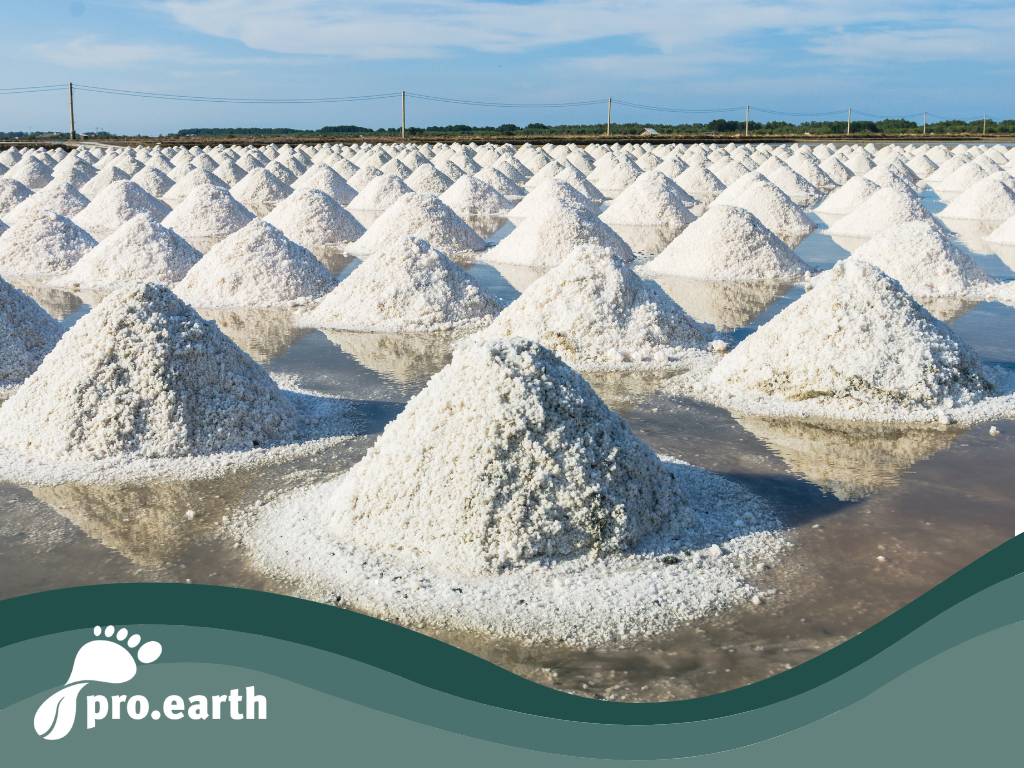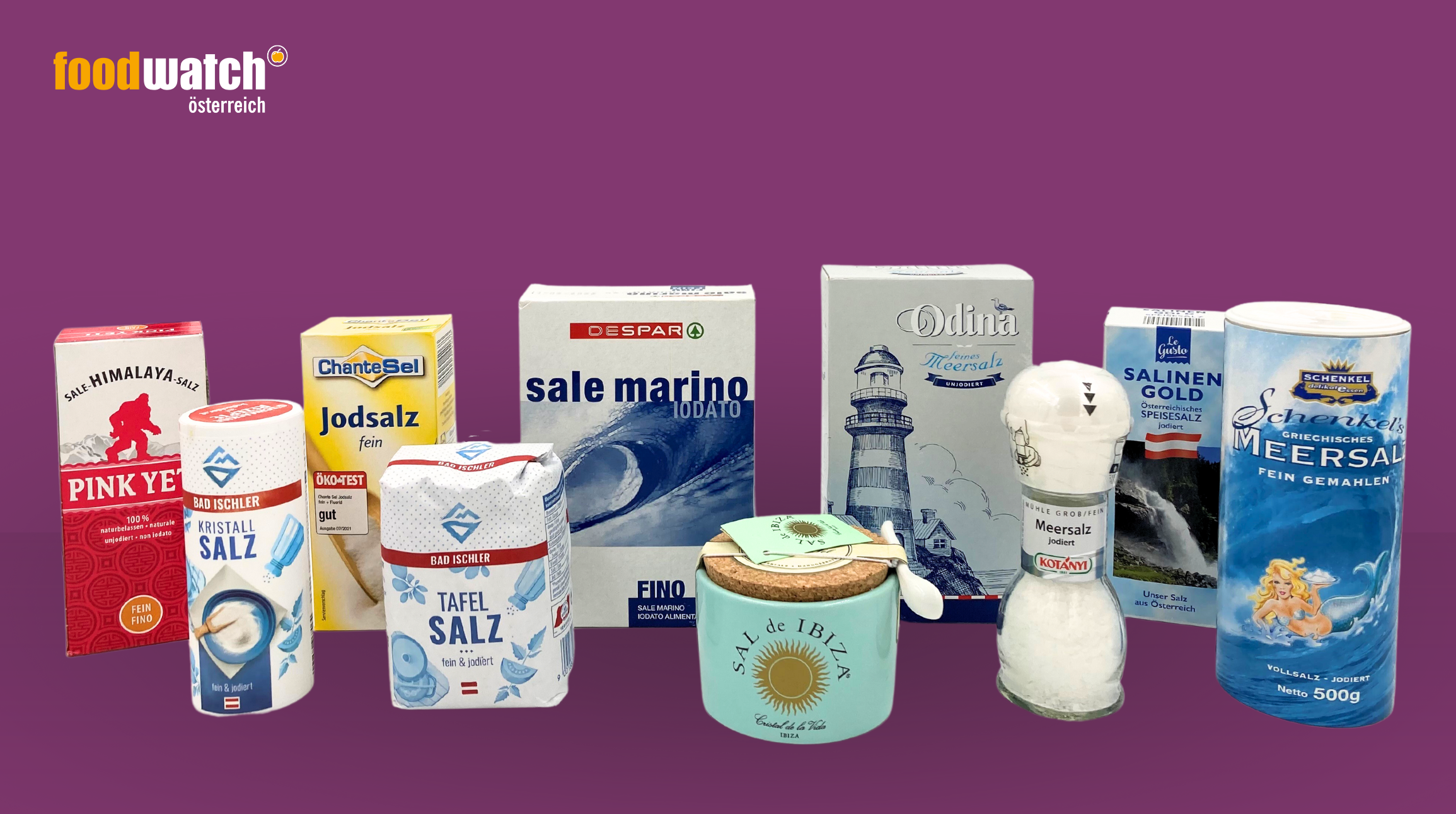Worrying: table salt contains microplastics

foodwatch salt test: 7 out of 10 table salt products are contaminated with microplastics. The salt from disposable salt mills is particularly heavily contaminated.
foodwatch Austria has had table salt from well-known brands tested for microplastic contamination. Rock salt and sea salt were tested. The result: 7 out of 10 samples are - in some cases significantly - contaminated with microplastic particles.
Kotányi's sea salt from the disposable mill is particularly heavily contaminated: when ground, the salt contains 66,000 microplastic particles per kilogram. Microplastics were detected in all the sea salts tested, albeit in very different concentrations.
No microplastic particles were detected in three out of five rock salt samples from the mountains (Bad Ischl table salt fine & iodized, Le Gusto Salinen Gold and Pink Yeti Himalayan salt fine). Surprisingly, the Bad Ischl crystal salt in the shaker was contaminated with microplastics, unlike the Bad Ischl table salt from the paper pack. And this despite the fact that both products are advertised as "free from microplastics".
https://news.pro.earth/2022/10/17/wieviel-mikroplastik-nehmen-wir-jede-woche-zu-uns/
In 2021, the Federal Environment Agency anonymously tested salt for microplastics on behalf of the Ministry of Climate Protection, the Ministry of Health and the Agency for Health and Food Safety (AGES). It was therefore not clear to consumers which products were involved. Lisa Kernegger, Head of foodwatch Austria, comments: "Test results that do not name products are not helpful for consumers. Transparency is needed here."
As an organization that represents the rights of consumers, foodwatch wants to ensure transparency. The NGO has therefore also had salt samples from 10 commercially available table salt products tested by the Federal Environment Agency. The aim this time was to publish the results transparently for consumers. No microplastics could be detected in 3 of the 10 salt samples tested. In the other 7 samples, the microplastic particle content per kilogram of salt varied greatly.
Microplastics can enter the salt both through contamination of the salt sources and during processing. There are currently no limits for microplastics in salt.

Photo ©️foodwatch Austria
The results in detail:
No microplastics detected:
- Bad Ischler Tafel Salt Fine & Iodized
- Le Gusto Salinen Gold Austrian table salt, iodized
- Pink Yeti Himalayan Salt Fine
Microplastics detected:
- Kotányi sea salt iodized mill - ground: 66,000 particles/kg
- Kotányi sea salt iodized mill - unground: 240 particles/kg
- Sal de Ibiza Fleur de Sel: 5,400 particles/kg
- Bad Ischler crystal salt shaker fine & iodized: 290 particles/kg
- Schenkel's Greek Sea Salt Fine Ground: 250 particles/kg
- DeSpar Sale Marino Fino Iodato: 100 particles/kg
- ChanteSel iodized salt fine + fluoride: 100 particles/kg
- Odina Fine Sea Salt Uniodized: 55 particles/kg
The most contaminated was the ground sea salt from the Kotányi disposable mill. The salt was removed from one package without grinding and tested. From another package of the same product, the salt was taken by grinding in the fine mill stage and then tested. In the unground sample, 240 particles per kilogram were found. In the ground sample, 66,000 microplastic particles per kilogram were detected. As most of the microplastics detected were made of the same plastic as the grinder, it can be assumed that the microplastics entered the salt during the grinding process.
Rock salt
In the case of rock salt, microplastic contamination is most likely to occur during the extraction and packaging process.
Sea salt
Microplastics were detected in all five sea salts tested, but the concentrations varied greatly. The contamination is probably due to microplastic pollution of seawater. The microplastic particle content in Fleur de Sel Ibiza was high at 5,400 particles/kg. This is most likely due to the way this salt is extracted. During extraction, the crystal salts are skimmed off the surface of the sea.
"Until we get to the root of the plastic crisis and finally ensure that no more plastic ends up in nature worldwide, we have to expect that microplastics will end up on our plates in one way or another. The UN plastics agreement currently being negotiated would be an important step towards putting a stop to global pollution," concludes Kernegger.
https://news.pro.earth/2023/05/27/wir-brauchen-ein-weltweites-plastikabkommen/
https://news.pro.earth/2023/05/29/fakten-zum-weltweiten-plastikverbrauch/
To download:






